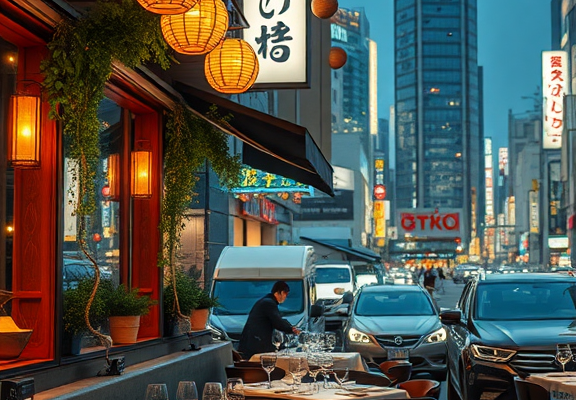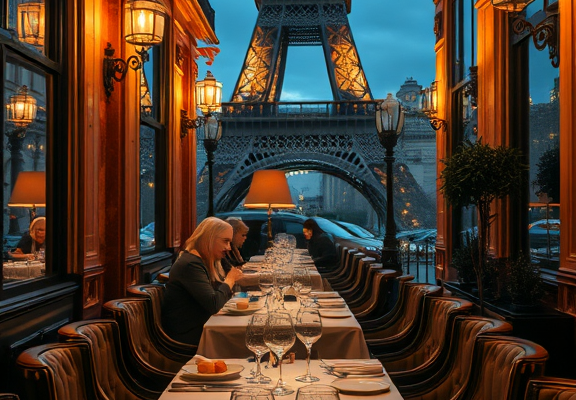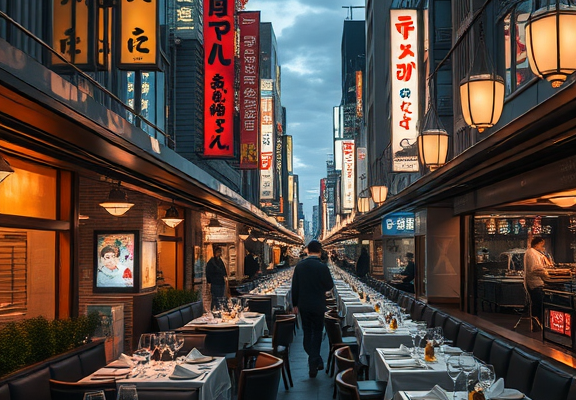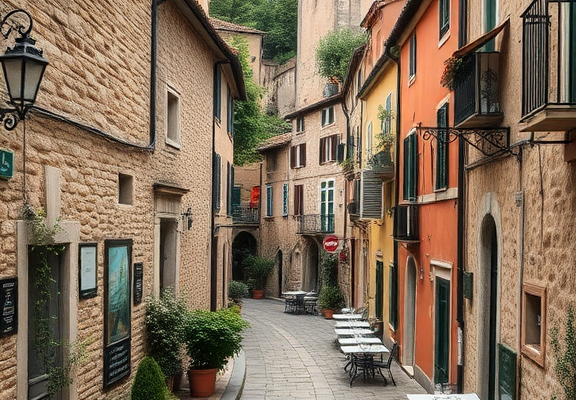Exploring the Richness of Cultural Food Experiences in Morocco
When you think about Morocco, the vibrant colors of the souks, the warmth of the sun, and the sounds of bustling markets come to mind. But it’s the rich tapestry of cultural food experiences that truly embodies the spirit of this North African nation. Moroccan cuisine is a delightful fusion of flavors, encompassing spices, traditions, and regional diversity that you must explore.
Thank you for reading this post, don't forget to subscribe!Traveling through Morocco, you will notice how food is not merely sustenance; it’s an essential part of social life, family gatherings, and celebrations. From the bustling streets of Marrakech to the serene landscapes of the Atlas Mountains, each region offers its unique culinary masterpieces.
One of the best ways to dive into Moroccan culture is through a traditional meal. The most iconic dish is, without a doubt, tagine. This slow-cooked stew, traditionally prepared in a conical clay pot, can be filled with a variety of ingredients such as lamb, chicken, apricots, and spices. Each bite reflects the rich history of the region and the vibrant spices, including cumin, saffron, and cinnamon, that Moroccan chefs lovingly use.
Don’t miss trying couscous, another staple of the Moroccan diet. It is often served on Fridays, marking it as a special dish for families to gather around. The fluffy grains are typically accompanied by vegetables and meats, creating a wholesome experience that warms not just the body, but the heart.
An essential part of Moroccan food culture is the ritual of eating. If you’re lucky enough to be invited into a Moroccan home, you will experience the warm hospitality that they are famous for. Meals often begin with date fruits and milk, setting a delicious tone for what’s to come. You might even be treated to a flavorful harira soup, commonly served during Ramadan, combining lentils, chickpeas, and fresh herbs, creating a symphony of tastes.
Street food also plays a significant role in Morocco’s culinary landscape. While wandering through the markets, you can sample an array of delights. Look for:
- Makouda: Crispy potato fritters seasoned with spices, often sold by street vendors.
- Briouats: Savory pastries filled with minced meat and spices, perfect for snacking.
- Mechoui: Tender, slow-roasted lamb that melts in your mouth, often seasoned with local spices.
Don’t overlook the sweet side of Moroccan cuisine. Desserts are often infused with ingredients like almonds, honey, and fragrant orange blossom water. Pastilla, typically a savory pie, can also come sweet, blending flavors and showcasing the diversity in Moroccan desserts.
An important highlight of Moroccan food culture is the traditional mint tea. This invigorating drink is often referred to as “Moroccan whisky.” You may find yourself invited to a tea ceremony where green tea is brewed with fresh mint and plenty of sugar. The pouring process, which involves lifting the pot high above the cup, adds a ceremonial touch that elevates the experience.
Moreover, immersing yourself in a cooking class while in Morocco offers an authentic way to learn about the ingredients and techniques that make the food special. You can discover how to properly blend spices or fold pastries, all while enjoying the camaraderie that comes with cooking together. It’s an educational journey that allows you to take a piece of Moroccan culture home with you.
As our taste buds explore, let’s not forget the regional influences that shape Moroccan dishes. In coastal areas, you will find incredible seafood, while in cities like Fes and Marrakech, the ingredients might lean more towards spices and grains. Each region tells a story through its food, inviting you to experience its distinct cultural identity.
Your culinary adventure in Morocco will be an unforgettable journey that goes beyond mere eating. It’s about experiencing the warmth of its people, the history behind the dishes, and the vibrant markets bursting with life. Whether you are enjoying a home-cooked meal, sampling street food, or sipping sweet mint tea, every bite is infused with the rich culture of Morocco. So embrace the flavors, and let the journey begin.
The Role of Traditional Moroccan Ingredients in Culinary Heritage
The culinary scene in Morocco is as vibrant and diverse as its landscapes and cultures. Traditional Moroccan ingredients play a pivotal role in creating this unique gastronomic identity. From spices to grains, these elements are deeply rooted in the country’s heritage, shaping the flavors and cooking methods that define Moroccan cuisine.
Spices are the lifeblood of Moroccan cooking. They add flavor, color, and aromatic qualities to dishes, making them irresistible. Some iconic spices include:
- Cumin: Often used in tagines and spice blends, cumin lends a warm, earthy flavor.
- Cinnamon: A star in both savory and sweet dishes, cinnamon brings a touch of sweetness that balances the heat of other spices.
- Ginger: Fresh ginger adds a peppery bite to dishes, enhancing their depth.
- Coriander: With its citrusy notes, coriander brightens up stews and salads.
- Turmeric: Known for its vibrant color and health benefits, turmeric is a staple in Moroccan cooking.
Each of these spices tells a story, often passed down through generations. They reflect the historical interactions between Morocco and various cultures, including Berber, Arab, and Mediterranean influences. When you taste a tagine, you’re not just savoring a meal; you’re experiencing centuries of culinary tradition.
In addition to spices, grains form the foundation of many Moroccan dishes. Couscous, for instance, is iconic in Moroccan cuisine. Made from semolina wheat, it’s fluffy and versatile, typically served with stews or vegetables. The process of making couscous is an art in itself. Traditionally, it’s steamed in a special pot called a couscoussière, allowing it to absorb the flavors of accompanying sauces.
Another key ingredient is millet, which is often used as a gluten-free alternative to wheat. Scientists have discovered that this ancient grain is packed with nutrients, making it a healthy choice for modern diets. Millet porridge, for example, is a traditional breakfast that showcases the grain’s versatility.
The use of dried fruits is another hallmark of Moroccan cuisine. Ingredients such as apricots, figs, and raisins are commonly featured in both savory and sweet dishes. They add natural sweetness and a chewy texture, elevating the flavor profile. Dishes like tagine with prunes, sprinkled with almonds, are perfect examples of this delightful combination.
Olive oil is another crucial component of Moroccan cooking. Known for its health benefits and rich flavor, olive oil is used in dressings, marinades, and as a cooking medium. It’s often infused with local herbs and spices, creating a tasty and fragrant oil that enhances every dish. You’ll find it drizzled over salads and used to sauté vegetables, providing not just taste but also a beautiful sheen to the food.
Herbs are indispensable as well. Fresh herbs like cilantro and parsley are used generously to garnish dishes, adding a fresh and vibrant touch. The combination of fresh herbs often counterbalances the warm spice noting, creating a well-rounded flavor experience. For instance, a sprinkling of chopped cilantro on a spicy harira soup awakens the entire dish, making every bite more enjoyable.
Additionally, dairy products like yogurt play a significant role in Moroccan cuisine. Rich and creamy, yogurt is typically served alongside spicy dishes, providing a cooling contrast. It also acts as a base for delicious sauces, enhancing various flavors on the plate.
Moroccan cuisine is not just about the ingredients; it’s about the methods and rituals of cooking as well. Traditional techniques, such as slow-cooking in tagines or the communal meal shared from a shared platter, emphasize togetherness and cultural heritage.
Whether it’s the rich spices or wholesome grains, the ingredients and their careful preparation reveal the heart and soul of Moroccan food. When you engage with these traditional elements, you nourish not just your body, but also your connection to a culture that’s vibrant and rich in history.
Ultimately, these aspects of Moroccan culinary heritage serve as a celebration of life’s joys, inviting anyone to indulge in its rich and diverse flavors. Experiencing Moroccan food is about relishing the details, fostering community, and appreciating the careful craftsmanship that goes into preparing every meal.
Conclusion
Cultural food experiences in Morocco showcase the nation’s rich culinary heritage, deeply rooted in tradition and regional diversity. As you explore these vibrant flavors, you encounter a tapestry woven from age-old recipes and locally sourced ingredients. From the aromatic spices that awaken the taste buds to the fresh produce from bustling markets, each dish tells a story of the land, its people, and their history.
Traditional Moroccan ingredients play a pivotal role in this culinary journey, elevating each meal to an experience that transcends mere nourishment. Staples like saffron, cumin, and preserved lemons not only enhance flavors but also reflect the country’s cross-cultural exchanges over centuries. The use of these ingredients highlights the deep respect Moroccan chefs have for their culinary practices, ensuring that the essence of their cultural food experiences remains alive and vibrant.
Engaging with Moroccan cuisine offers more than just a meal; it’s a journey into the heart of the country, where hospitality reigns supreme. Sharing a tagine with locals, savoring sweet pastries with mint tea, or enjoying a communal feast at a traditional Moroccan wedding all create lasting memories.
Whether you are a seasoned food enthusiast or a curious traveler, delving into Morocco’s culinary world opens up a deeper understanding of its culture. Each bite serves as an invitation to appreciate the amalgamation of history, geography, and tradition that defines Moroccan food. This incredibly flavorful journey makes Morocco not just a destination, but a culinary adventure waiting to be explored.






